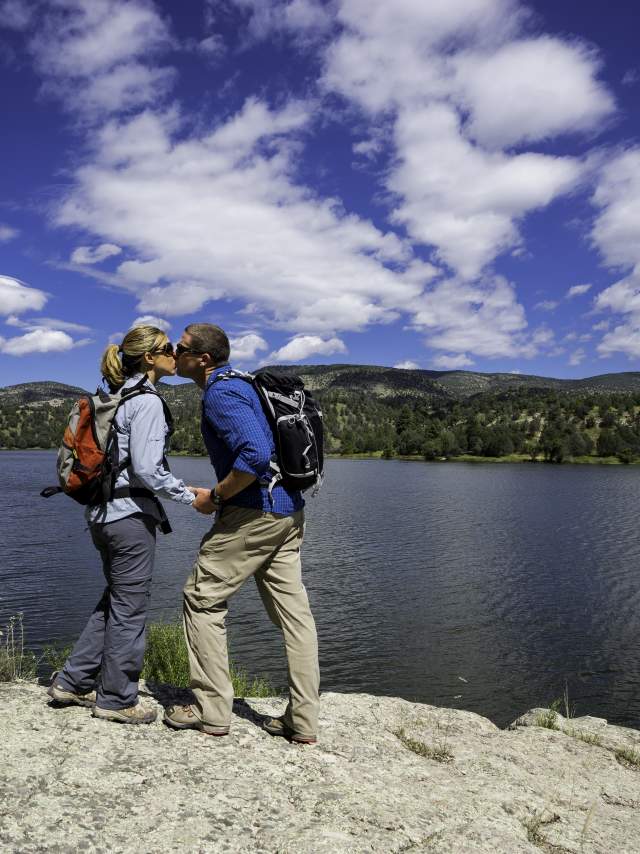HARDING COUNTY
With vast plains and mesas, grasslands and rivers, this is beautiful country, home to cowgirls and cowboys.
Although small in terms of population, Harding County is rich in history and geography. The Kiowa National Grasslands is located in the northern section of Harding County, about 20 miles east of I-25. Ranches and guest ranches dot the northeast plains landscape. Dinosaur tracks start at Mosquero Creek and stretch northward through New Mexico and southeastern Colorado.
The wide open spaces of Harding County are bounded on the west by the steep-sided Canadian River Canyon. With vast plains and mesas, grasslands and rivers, this is beautiful country, home to cowgirls and cowboys. Much of the personal income in the county comes from cattle ranching.
The county was created by the state legislature on March 4, 1921, the same day Warren G. Harding was inaugurated 29th President of the United States.
At that time approximately 5,000 people lived in Harding, but the county has been losing population ever since. Like other agricultural communities in the American Southwest, Harding County has never recovered from the Great Plains Dust Bowl. Based on the 1996 population of 946 persons, Harding is the least populous and second least densely populated county in the state.
Only 774 souls reside in Harding County, but they are happily at home on this range, where deer and antelope truly play. It's a hardworking, outdoors, high-quality life. And let's dispel two myths of Harding County right now. Myth #1: It's flat. Nope! The prairie rolls, and mesas, canyons and rock formations provide numerous contrasts. Myth #2: It's colorless. Not! The greens of the prairie grasses change with the seasons, bright sunflowers dance in the breezes of late summer and early fall, and all year long the horizon glimmers in pale blue and purple pallets. The colors are there for anyone who takes the time to find them. And the night sky is so clear the stars practically reach down and touch a gazer's heart and soul.
LA FRONTERA DEL LLANO
When the railroads began settlement of the West, homesteaders flocked to remote Harding County and Southern Union County until the Great Depression and Dust Bowl years crushed their dreams. The county is rich in history and has geography that includes mesas, grasslands, plains and rivers. Of particular scenic interest are the spectacular Canadian River Canyon and Kiowa National Grasslands.
KIOWA NATIONAL GRASSLANDS
Are part of a national grasslands system that also includes the Rita Blanca, McClellan Creek and Black Kettle. These four grasslands are administered for the U.S. Department of Agriculture by the Cibola National Forest and cover 263,954 acres scattered throughout New Mexico, Texas and Oklahoma. In New Mexico, the Kiowa National Grasslands are in Union County, Harding County, and on the border of Mora County.
CANADIAN RIVER CANYON
Is at once the most striking and least known feature in eastern New Mexico. Known by few, even among residents of New Mexico, the Canadian River Canyon is a region of soaring cliffs, diverse flora and fauna, wild rivers, striking rock formations and historic ruins.
The possibilities for hiking and backpacking are particularly enticing. It is possible to follow the Canadian River for almost twenty miles. Numerous tributary canyons also provide several hiking opportunities. The vegetation in the side canyons is generally thicker, with piñon pine, juniper, and ponderosa pine providing cover. There are also numerous hiking and backpacking possibilities on the canyon rim.










